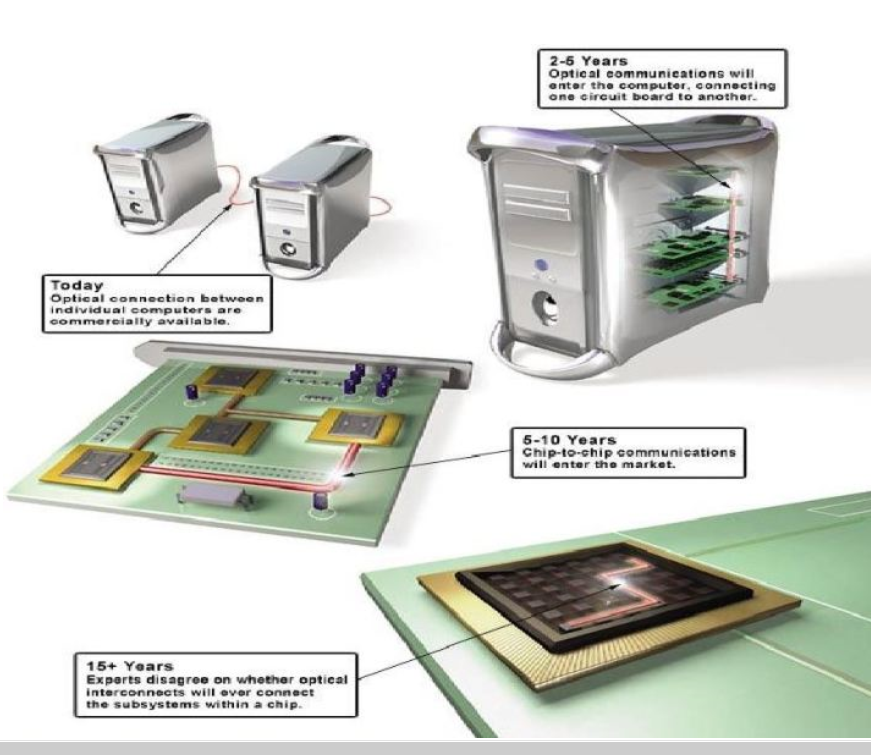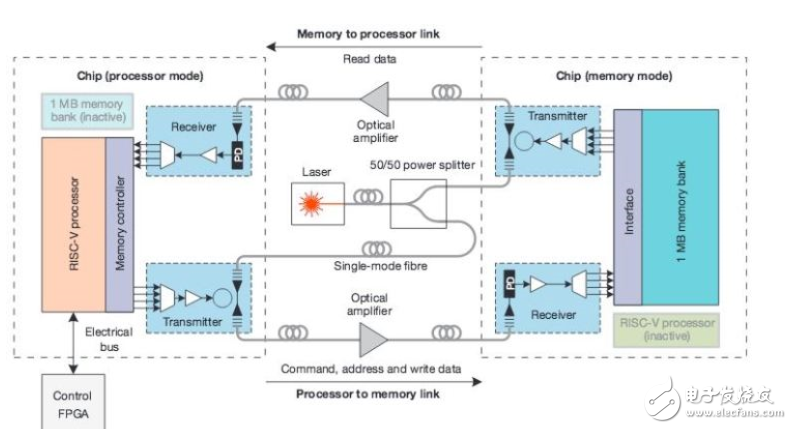Silicon Photonics has become a hot topic among companies and researchers, mainly due to its low cost and energy efficiency. Silicon is an excellent material for guiding light, making it a strong candidate for integrating optical components with traditional electronic circuits. As CMOS transistors continue to shrink in size, optical devices face limitations in miniaturization, which has sparked significant research interest in this area. Back in the 1980s and 1990s, pioneers who were discussing the future of Moore’s Law started exploring alternatives to silicon-based chips as they approached physical limits. I still remember my professor mentioning that CMOS technology would hit a wall when it reached a few nanometers. Today, we’re already seeing 7nm chips, but a large-scale replacement for CMOS hasn’t materialized yet. This gap between theory and reality shows how complex the transition really is. In this context, Silicon Photonics stands out as a key player under the “More than Moore†concept. It combines optical and electronic functions on a single chip, opening new possibilities for high-speed data transmission and processing. The idea of integrated optics was first proposed by Miller at Bell Labs in 1969. By 1972, Somekh and Yarive suggested combining optical and electronic components on the same semiconductor substrate. In the 1990s, as silicon chips shrank to sub-micron sizes, their dimensions began to align with optical wavelengths. The large refractive index difference between silicon (around 3.45) and silicon dioxide (around 1.44) made total internal reflection easier, which helps reduce the size of optical components and increase integration density. However, optical diffraction limits further shrinking of photonic devices, even as CMOS transistors now reach 10nm or smaller. This has shifted the focus of Photonic Integrated Circuits (PICs) toward integrating optical connections and photoelectric conversion within the same chip, working alongside CMOS circuits rather than replacing them entirely. As shown in the image above, fiber-to-the-home technology is widely used today, and many data centers rely on fiber-level interconnects. However, at the chip level, while demo chips and 100G modules are becoming more mature, full-scale commercial adoption is still far off. (Note: This article was published in 2002, and 15 years later, many of the predictions haven’t fully come true—whether that's a good or bad thing is debatable.) At the core of Silicon Photonics' appeal is its low cost and power consumption, along with silicon’s favorable properties for light guidance. Thanks to the SOI process, optical waveguide losses can be kept around 2-3 dB/cm. However, several challenges still hinder its widespread use: Photoelectric Interconnection: Integrating light sources like lasers and photodetectors remains a challenge. Silicon itself is an indirect bandgap material, so external materials such as III-V compounds or germanium are often needed, complicating the manufacturing process and increasing costs. Light Control: Controlling optical wavelength deviations is difficult due to sensitivity to process parameters like thickness and doping. Even small changes, such as a 10% shift in grating coupler thickness, can cause a 50nm shift in coupling wavelength. Many optical modulators still require heaters for adjustment, adding complexity and cost. Integration Challenges: While CMOS continues to shrink, optical components cannot follow due to diffraction limits. Additionally, the packaging between optical and electrical chips is still an area needing further development. Here’s an example of a Silicon Photonics communication chip: Source: C. Sun et al., "Single-chip microprocessor of communicates directly using light," Nature, 2015. This paper presents a system that can be considered a microprocessor, theoretically achieving 550 Gb/s data transfer. Although the specific wavelength used (not in the industry standard 1310nm or 1550nm) is unusual, the concept is straightforward: the electrical part handles signal processing (like SerDes and digital logic), while the optical part modulates light based on electrical signals, then converts it back to electrical at the receiving end. Some special modules help fine-tune each step. In summary, I hope this brief introduction gives you a clear understanding of Silicon Photonics. If you're interested in diving deeper, I’d love to hear your thoughts and explore this exciting field together. Outdoor Cabinet Air Conditioner Industrial Air Conditioner,Cabinet Heat Exchanger,Peltier Air Conditioner,Industrial Aircon Guangdong Yuqiu Intelligent Technology Co.,Ltd , https://www.cntcetltd.com
